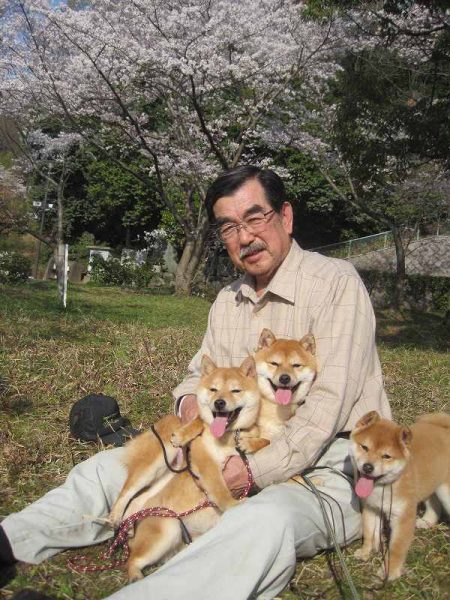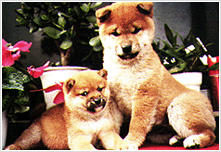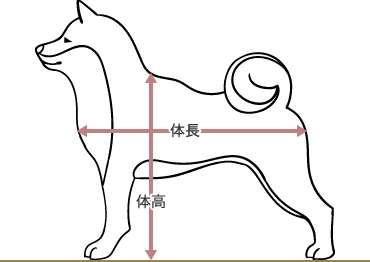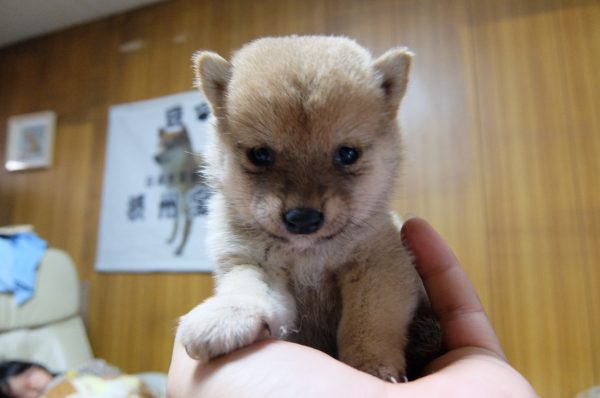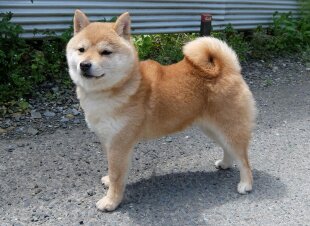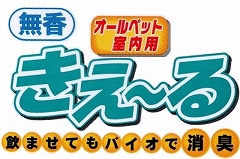What is a Mameshiba Inu
|
The longest-established kennel specializing in Mameshiba in Japan welcomes customers from all over the world. |
CONTENTSJapan’s oldest Mameshiba Inu kennel |
For those who are thinking about purchasing a Mameshiba Inu |
Beware of Mameshiba, who deceives even Japanese people!
|
|
In recent years, about 60,000 to 70,000 Shiba Inu are born annually. |
| Recently, perhaps because the name “Mameshiba Inu” has become popular, some places are selling smaller puppies of regular Shiba Inus as “Mameshiba Inu”. |
| Some unscrupulous companies disguise regular Shiba Inus as Mameshiba Inus and sell them wholesale to pet stores and other retailers. |
|
As you can see in the photo on the right, the difference in growth between Shiba Inu and Mameshiba is obvious. However, it is difficult for the general public to identify an individual by size alone, and even people in the industry can be fooled. |
Left: Mameshiba Inu Right: Shiba Inu, Both 55 days old
|
| In recent years, with the Mameshiba Inu boom, sales prices have been rising in Japan, and more and more breeders are entering the market. |
| Pet stores do not want their puppies to grow to the size of a Shiba Inu, but to prioritize profits, they label small Shiba Inus as “Mameshiba Inu type” and sell them as if they were real Mameshiba Inus. |
| There is also a very distorted structure, with regulations such as not taking in puppies until they weigh less than X kg in X days, and they will not take them in unless they are on a restricted diet until the day of shipment. |
| In order to avoid such problems, our kennel does not sell to pet stores. |
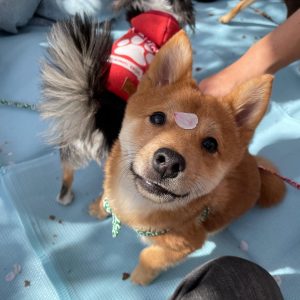 |
| Also, many people think that repeated inbreeding will result in smaller size, but this is not smaller size, but deformity. |
| Such dogs suffer from reduced fertility and a short life span. |
| Mameshiba Inu does not simply refer to a smaller version of the Shiba Inu,but to a breed that has been pedigreed and fixed over a long period of time. |
| Attention!! |
| Recently, I have frequently heard people say that they bought a Mameshiba Inu but it turned out to be too big. To avoid such mistakes, we would like to inform you of some precautions to take when purchasing a Mameshiba Inu. It is difficult for the average person to tell the difference between a Mameshiba Inu and a Shiba when they are puppies, so please check the following points. |
| No.1 Confirmation of kennel name |
|
It was the kennel called Taruiso that first started producing Mameshiba Inus. |
| No.2 Which organization issues the pedigree? |
| The organization that produces the largest number of Shiba Inus is Nihonken Hozonkai (Japan Dog Preservation Society), but the society prohibits its members from producing Mameshiba Inus. Therefore, there is no Mameshiba Inu with this organization’s pedigree. (We have confirmed this with the Japan Dog Preservation Society.) |
| The Japan Kennel Club is the organization that issues the largest number of pedigrees in Japan,but it also does not recognize Shiba Inu, as it is based on the above-mentioned Nihonken Hozonkai. |
| In addition, the XX Mameshiba Inu Organization and the XX Mameshiba Inu Headquarters are not official organizations,so it is difficult to make pedigrees for the next generation. |
| In 2008, KC Japan recognized only Hozanso’s Mameshiba Inu dogs as Mameshiba Inu at that time. |
| Therefore, if you trace the ancestors of Mameshiba Inu in the world today,they are often from Hozanso. |
| Later, Nihon Mame Shiba-ken Association (the Japan Mameshiba Inu Association) was established with even stricter standards, and pedigrees were issued to dogs of the kennel Hosanso and kennel Mukai lines as ancestors. Many Mameshiba Inu breeders are currently affiliated with this association. |
| If you search for Mameshiba Inu breeders, you will find many websites. |
| Just by checking the above two points, you can increase your chances of finding a genuine Mameshiba Inu. |
| There are not many Mameshiba Inus yet. We recommend that you do not rush into purchasing a Mameshiba Inu until you have done your research. |
| As a person who created and introduced the Mameshiba Inu to the world,I am writing this on behalf of the members who are earnestly engaged in breeding. |
| We sincerely hope that you will find a cute puppy. |
| Mameshiba Inu Sesshu Hozan Founder, Masanobu Nishiyama |
What kind of dog is the Mameshiba Inu? |
| Size of Mameshiba Inu |
| Height Comparison Chart for Breeds Related to Japanese Dogs |
|

|
 |
| Recently, more and more people think that the smaller the better, but this is not true. |
| We have observed many Mameshiba Inu dogs all over Japan and studied their skeletons and other characteristics. when we started breeding and promoting the Mameshiba Inu. |
| We also have owners who bring Mameshiba Inus to our kennel for breeding requests, and sometimes we see Mameshiba Inus that are much smaller than the standard Mameshiba Inu purchased elsewhere. |
| If we observe closely, we sometimes see dogs with individual anomalies, such as skeletal distortions or missing teeth. |
| It is also true that many Mameshiba Inu Inus, which are much smaller than the standard, have various disorders and deformities, such as being out of shape as Shiba Inus, mentally restless, males have poor fertility, and females have many problems, especially at delivery. |
| Mameshiba Inu under 25 cm will be issued a Mameshiba Inu pedigree if they are healthy and have no particular problems. |
| However, be careful with Mameshiba Inu that are too small. |
|
千尋(Chihiro)
|
| The Shiba Inu has long been loved and bred by the Japanese people. However, because they are not suited to today’s cramped living conditions, the Mameshiba Inu was bred through generations of crossbreeding by selecting Shiba Inus with smaller body sizes. |
History of Mameshiba Inu~Small Shiba Inus have always existed? |
| More than 80 years ago, before World War II, small Shiba Inus were kept by hunters in mountainous areas throughout Japan as hunting dogs for small animals such as rabbits, marten, mujina (cave bear), raccoon dogs, and foxes. |
| Differences between a Shiba Inu and a Mameshiba Inu |
| The Mameshiba Inu is the same in appearance as its ancestor, the Shiba Inu, but the most obvious difference is its size. Comparing the height of the two breeds, the Shiba is 38-41 cm (male) and 35-38 cm (female), while the Mameshiba Inu is 30-34 cm (male) and 28-32 cm (female) (all as an adult dog). If you are used to seeing Shiba Inus, you will realize how small Mameshiba Inu is in size. |
| Mameshiba Inu as a breed of dog |
| More and more people are having Mameshiba Inus these days because they are small, cute, and can be kept in the house. You can see many Mameshiba Inu sold in pet stores, but until 2008, there was no pedigree of the breed “Mameshiba Inu” because the breed was not recognized as a breed. However, until 2008, the breed “Mameshiba Inu” was not recognized, and there was no pedigree of the breed “Mameshiba Inu”. |
| First in the World! KC Japan Officially Approves Mameshiba Inu! |
| The Mameshiba Inu is still not recognized as a breed by some organizations and is still being bred and sold without a breed standard, resulting in various problems.Therefore, KC Japan created a standard that depicts the ideal image of what a Mameshiba Inu should be, and became the first organization in the world to officially recognize the Mameshiba Inu as a pedigree-issuing organization. |
| What is the standard of Mameshiba Inu? |
| The Mameshiba Inu has inherited many of the characteristics of the Shiba Inu, and is simple, graceful, and loyal to its master. Compared to the fearless expression of the Shiba Inu, the Mameshiba Inu’s facial features have a lovely expression that suits its physique, and as a small family dog, it is required to have a cheerful and friendly personality. |
|
千尋(Chihiro)When the puppy in the photo above became an adult dog
|
Characteristics of the Mameshiba Inu |
| Due to housing conditions, the Mameshiba Inu is attracting attention from people who wish to keep a Shiba indoors. |
| They have adorable faces and small bodies. Because of their small size, they can be easily groomed and walked, even by the elderly and children. |
| Mameshiba Inu’s coat color is red (brown), black, sesame, and white, but more than 90% of them are red, and within the red, there is Aka-ichimai (all red) and Ura-jiro (red and chest area white). |
| The Mameshiba Inu is a wonderful dog that has the cuteness of a pet dog rather than the fearlessness of a Shiba Inu, and yet has the dignified nature characteristic of a Shiba Inu. |
|
|
| Mameshiba Inu, the obedient and loyal dog, is the root of the Japanese dog. |
| The Japanese dog is said to have its roots in the Shiba Inu. |
| Despite their small size, Shiba Inus are said to be spirited, brave, and obedient to their masters. They are also sensitive to the senses, which helps them in hunting, and they display a high homing instinct when they are separated from their masters. They are also known as “loyal dogs” because of their high level of loyalty and preference for cleanliness. |
| Shiba Inus are dogs with such deep affection for their owners. |
| The Mameshiba Inu is a wonderful dog that has all the advantages of the Shiba Inu condensed into its small body. |
| As a side note, our first little Shiba Inu disappeared suddenly and we were all depressed. |
| But we were too close to moving to search as best I could… |
| And a year and a half later… |
| The house next door to our former residence called us and said, ” It seems that your dog is back. She’s wandering around.” |
| All my family members rushed to check on her. |
|
There, covered in mud and a little tougher than ever, was my family’s little Shiba Inu…
|
The beginning of this kennel~Encounter with Mameshiba Inu (Shiba Inu) |
|
Founder Masanobu (a father of mine, the current owner) started breeding Mameshiba Inu when he met a very small Shiba Inu in the 1960s. |
| The Shiba Inu suffered badly during the war and its population was drastically reduced, so efforts were made to preserve the breed shortly after the war in order to protect the unique Japanese breed. |
| The Shiba Inu has flourished thanks to the efforts of many people, including preservation societies and other organizations that have conducted powerful activities and collected excellent Shiba Inu from all over the country. |
| However, the establishment of a reference averaging in the process of attempting to recover the population would later become problematic. |
| The problem was that among the Shiba Inus of the time, there were many large Shiba over 38 cm, which was the average size, and many small Shiba that were 30 cm shorter than the average size. These dogs were excluded from breeding because they were outside the regulations. As a result, the range of Shiba Inu sizes became narrower. |
| Nearly 100 years have passed since the preservation of Japanese dogs began, but the fact that large Shiba over 38 cm in height and nearly 20 kg in weight are still being produced is proof that such genes are still present. |
| Although size diversity was sacrificed for the sake of species recovery, our kennel focused on the preservation of the small Shiba (Koshiba and Shaku-Shiba). |
| When founder Masanobu first started breeding, he and I visited people who had struggled to make Shiba Inus flourish, learned about their history, and ran around the country looking for small Shiba Inus to protect them. |
| Not only small, but also the Shiba Inu’s skeletal structure, appearance, coat, loyalty to people, or the lineage of their parents and grandparents were examined to see what he could confirm with his own eyes, and he began to collect and breed lines that would produce truly small Shiba Inus from many generations ago. |
| He had to be very careful about collecting small Shiba Inus, because even if the child is small, if the parents are large, the parents’ genetics can suddenly appear. |
| Although the name Mameshiba Inu is now well known to the public, many elderly people have told me that before World War II, small Shiba Inus were familiarly known as “Koshiba” or “Shaku-Shiba. |
| Mr. Yoshihiro Saito, who made great efforts to preserve the Japanese dog, regretted in his later years, “It was a mistake to set the size of the Shiba Inu to the current range”. |
| This testimony was heard by many people involved in the preservation of Japanese dogs at the time. |
|
Today, our kennel is the oldest Mameshiba Inu breeder that has preserved the Mameshiba Inu.
There are many Japanese who are being deceived. Please use this URL to let them know the real Mame-Shiba Inu https://www.e-nishiyama.com/contents/en/
Leave it to us if you are exporting Mame-Shiba Inu. |
Move to another page
What is a Mameshiba Inu (current page) FAQs about Export and Mameshiba Inu Appropriate amount of food for the Mameshiba Terms and conditions of the contract for the sale of living organisms Appropriate amount of food for the Mameshiba |



